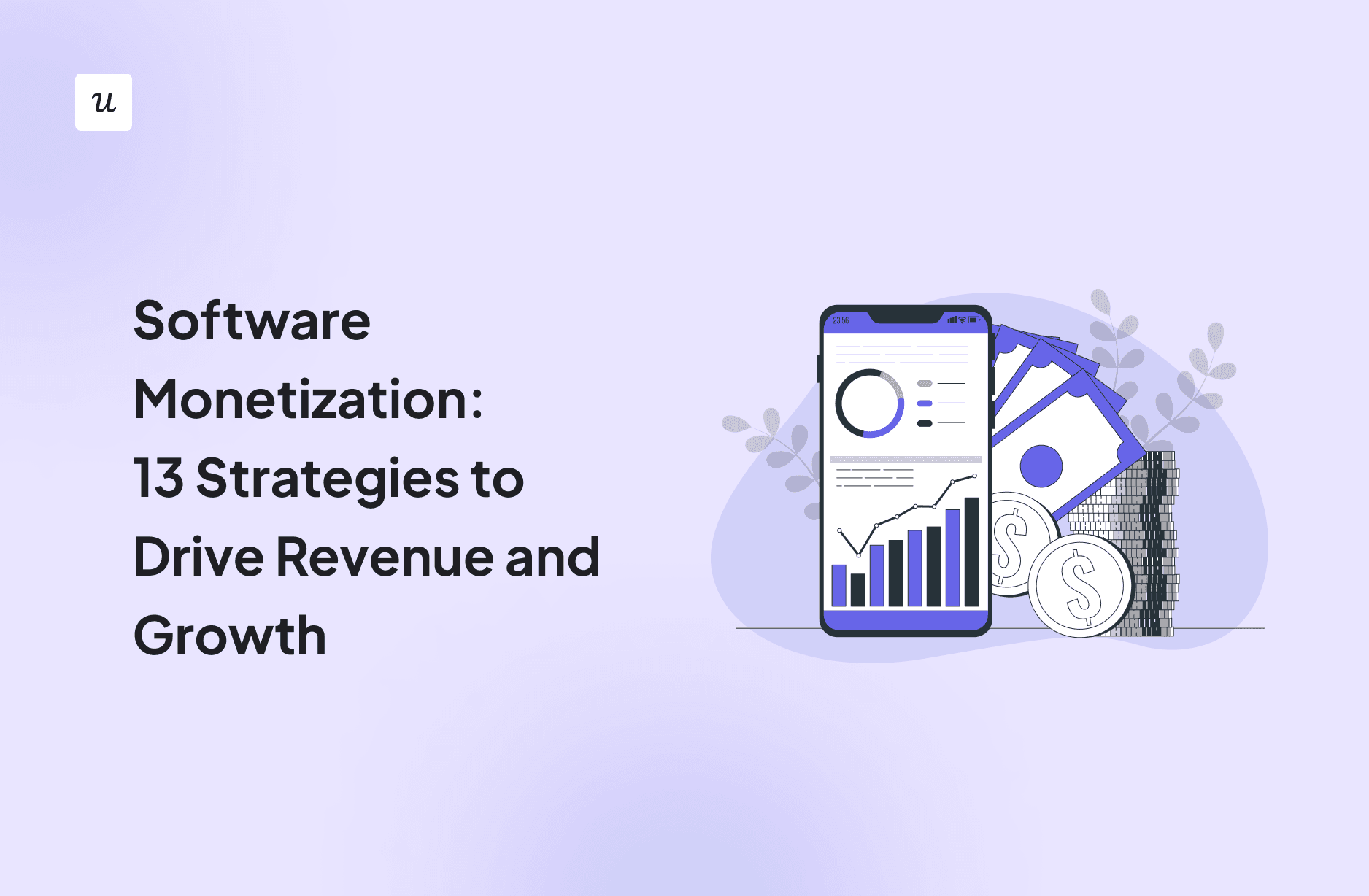
Software monetization can be complex to deal with. You can implement many software monetization strategies in your product, but picking the right one can be a challenge. This article will go through 13 software monetization solutions to help your software product create great revenue streams and drive product growth.
Try Userpilot Now
See Why 1,000+ Teams Choose Userpilot

What is software monetization?
Software monetization refers to generating revenue from your software by turning it into a profitable asset by implementing various new business models.
This multifaceted approach extends beyond the initial sale of the software and explores avenues for sustained income.
At its core, software monetization is finding effective ways to extract value from software offerings to reinvest in ongoing development, support, and enhancements.
What is a monetization strategy?
A software monetization strategy is your plan for making money from your software. It’s not just one action but a combination of approaches tailored to ensure your software brings in revenue. Let’s quickly go over what makes up a robust monetization strategy:
- Intellectual Property Protection: Intellectual Property (IP) protection involves legal and technical measures to prevent others from copying or using your software without permission. This ensures that your creativity and hard work, as aspects of your intellectual property, are safeguarded, and you maintain control over how your software is distributed and used.
- Pricing and Packaging: This pricing strategy determines how much customers pay for your software. You might sell your software for a one-time fee, offer it through a subscription model, or even bundle it with other products or services. The aim is to make your software appealing to buyers and ensure it meets their needs while maximizing your revenue.
- Entitlement Management: Entitlement management controls user access to your software, including which features they can use based on their purchase or subscription level. This system helps manage customer licenses efficiently, ensuring only authorized users can access your software.
- Usage Tracking: By monitoring how users interact with your software, you can gather data on which features are most popular and how often the software is used. This insight is crucial for making informed decisions about software updates and new features and adjusting your monetization strategy to better meet user needs.
- Advertising: If your software is free to use, incorporating advertising as a revenue stream can be an effective strategy. This involves displaying ads within your software and earning money based on user views or clicks. The challenge is to integrate ads in a way that generates revenue without compromising the user experience.
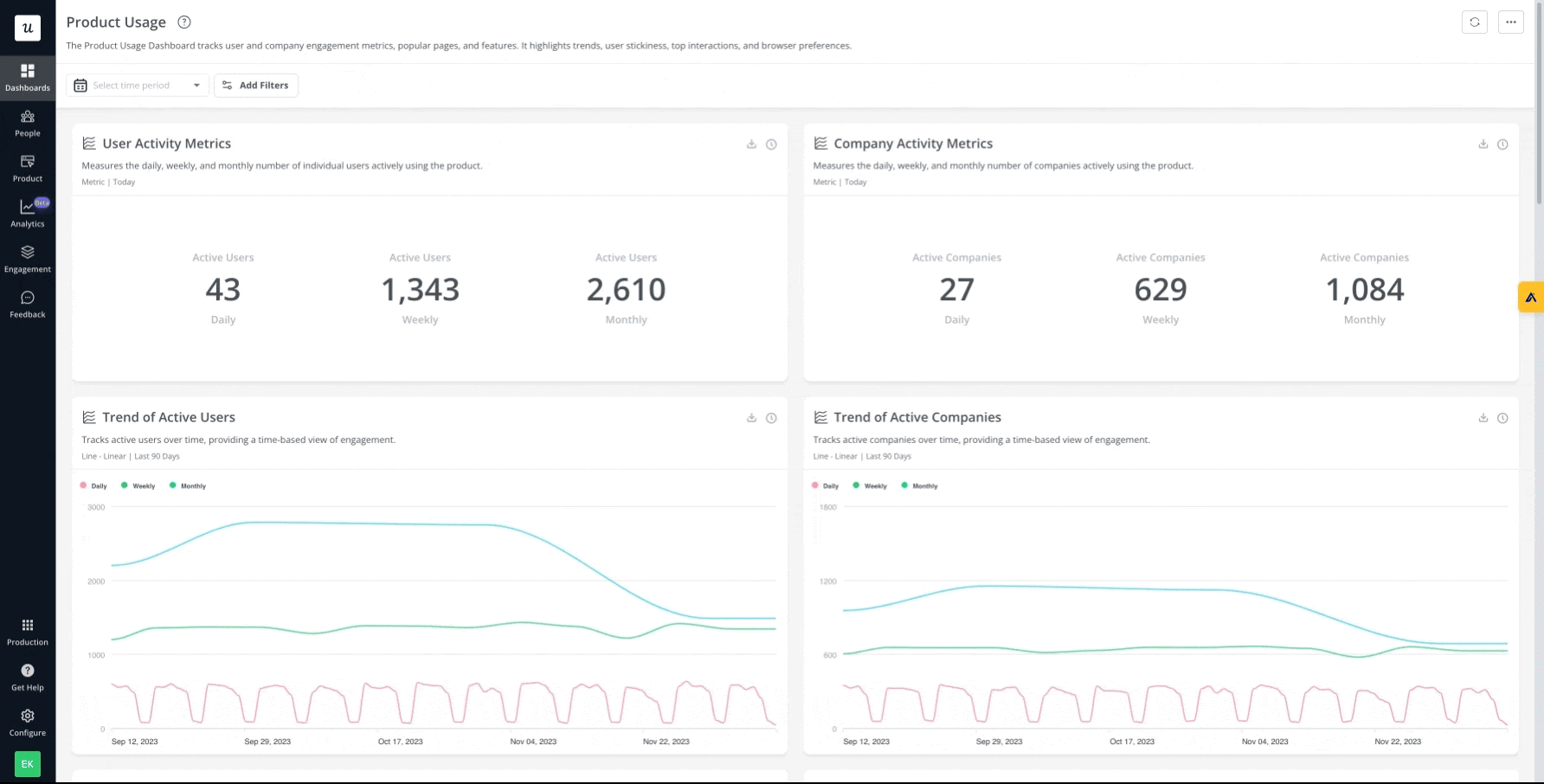
Product usage analytics with Userpilot.
13 software monetization strategies
Software monetization strategies can help your software to increase its revenue potential. These strategies span traditional sales models to inventive product-led approaches that adapt to changing user behaviors and market trends.
1. Software licensing
Software licensing is a core component of software monetization. It establishes guidelines for software use, including allowable actions and limitations such as copying or altering.
It protects creators’ rights and permits users to use the software under specific conditions.
Software licensing models, integral to software monetization, set the conditions for sale and usage, offering choices like one-time buys or subscriptions and possibly limiting user or device numbers.
This adaptable approach aids both individual consumers (B2C) by providing device-specific software access and businesses (B2B) by addressing a variety of software licensing and software monetization needs.
2. Subscription model
The subscription model lets users pay a recurring fee for ongoing software access, offering flexibility and a steady income for creators.
It supports continuous updates and a strong user-provider relationship, appealing widely across markets. This model marks a shift towards flexible, user-focused software consumption.

3. Freemium model
The freemium model offers software for free, enticing users to later pay for advanced features. This approach quickly delivers value and boosts user activation by eliminating initial costs.
It allows users to try core features, encouraging upgrades to premium. It thus grows the user base and converts some into paying customers, leveraging free access to drive revenue.
4. Premium model
The premium model, pivotal in software monetization, targets established products and experienced users, offering advanced features for an upfront fee.
Ideal for brands with strong reputations, it convinces users of the value of paying more.
This monetization strategy aims to convert freemium users to premium, emphasizing the enhanced benefits and functionalities of the premium version.
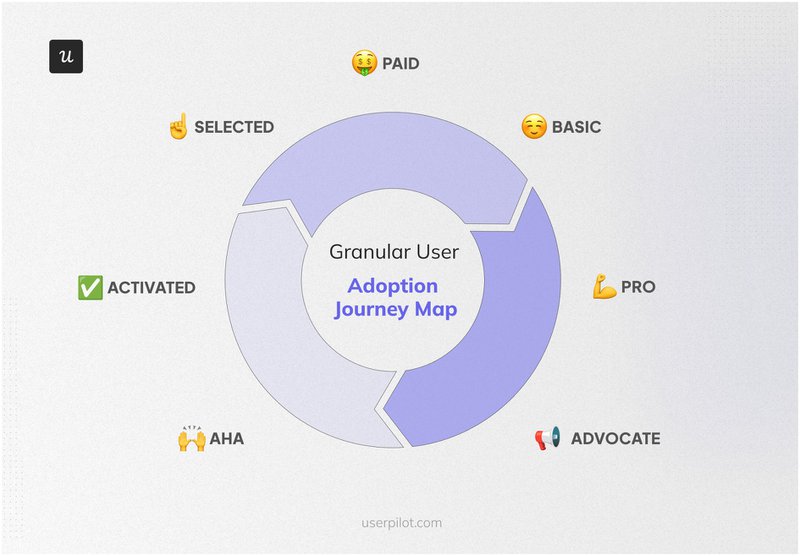
5. Trial model
The trial model offers users a free trial of software, aiming to showcase its value. This model is particularly effective for new market entry.
This strategy allows potential customers to fully explore the product’s features, helping to prove its worth, fit for their needs, and let the customer discover the Aha! moment.
The key to success lies in choosing the optimal trial length, which varies based on the software’s complexity and the user’s learning curve.
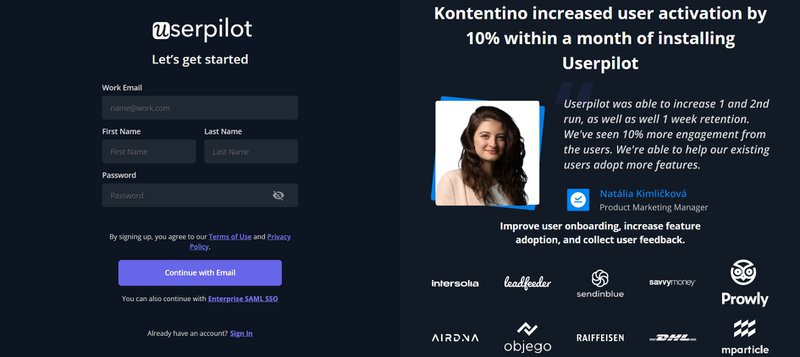
6. Pay-as-you-go model
The pay-as-you-go or usage-based model charges users based on their actual software use, offering flexibility with lower upfront costs and minimal commitment.
Users pay for their specific consumption, like data usage or transaction volume, making it ideal for varying demand levels.
This model appeals to those seeking scalable solutions, accommodating a wide customer range from small software companies to individuals by aligning costs directly with usage.
7. In-app purchases
In-app purchases allow users to buy additional content, features, add-ons, templates, or services directly within the app.
This strategy is crucial for upselling and cross-selling, where upselling encourages customers to purchase more expensive items or upgrades, and cross-selling suggests complementary products for account expansion.
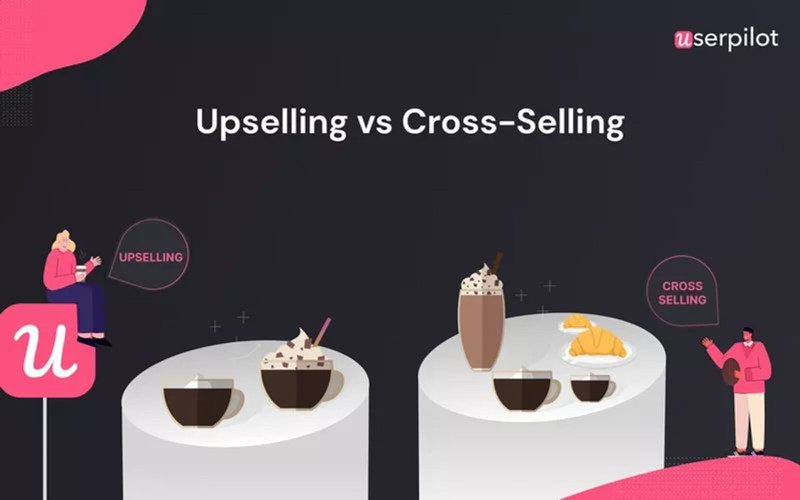
Effective in-app communication is key to promoting these opportunities, guiding users toward valuable additions that enhance their experience.
Tools like Userpilot help in delivering targeted messages and prompts within the app, making it easier to highlight new content or features that users might find beneficial.
By integrating in-app purchases with strategic communication, your software application can significantly increase its revenue while improving user satisfaction through personalized offerings.
8. In-app advertising
In-app advertising becomes profitable with enough traffic volume and is particularly effective when ads are targeted at specific audience segments.
This monetization strategy involves displaying ads within the software application and providing a revenue stream without directly charging users.
It should be combined with efficient lead-generation marketing strategies to maximize the effectiveness of in-app advertising. These strategies help increase ad views and clicks to attract a larger user base.
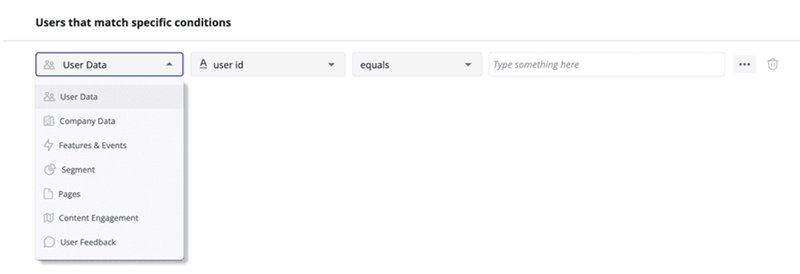
9. Product model
The “user is the product” model monetizes through data collection, utilizing users’ preferences, behaviors, and interactions.
This data aids advertisers or third parties in targeted marketing and product development, especially in social media and messaging apps.
It generates revenue without direct user fees but requires maintaining trust and ensuring data privacy to succeed.
10. Open-source model
The open-source model offers its source code for free use, modification, and distribution, encouraging community collaboration and innovation.
Revenue is generated through services beyond basic use, such as technical support, premium features, hosting, or SaaS.
This strategy keeps the core software free while offering value-added services for those seeking more advanced options, benefiting both developers and users.
11. White labeling
White labeling, a pivotal element in a software monetization strategy, is a business model where a product or service is produced by one company but rebranded and sold by another.
This strategy enables the selling company to offer a product or service without design, development, or manufacturing costs.
Essentially, the buyer acquires the product without branding, applies their own branding, and then markets it as their own.
This approach, integral to software monetization strategy, is widespread across the software industry, technology, food, and cosmetics.
12. Affiliate marketing and referrals
Affiliate marketing and referrals are key strategies in software monetization. They involve promoting another company’s products or services in exchange for a commission on sales or leads.
By partnering with affiliates or motivating users to refer new customers, you leverage existing networks to expand reach and boost revenue.
Success hinges on aligning with similar niches, ensuring the products or services you promote are relevant to your audience.
13. Crowdfunding and donations
Crowdfunding and donations offer a unique approach to software monetization, where users voluntarily contribute financially to support the product they use for free.
This model relies on the goodwill and loyalty of the user base, appealing to their desire to see the software succeed and evolve.
By contributing, users help ensure the continued development and maintenance of the product without a mandatory fee.
This strategy is especially effective for projects with a strong community focus or niche appeal, where users are highly invested in the product’s future.
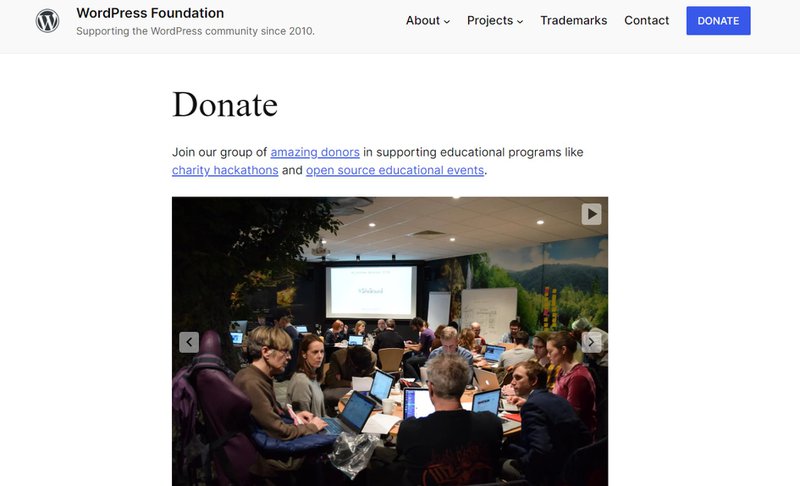
How do you monetize a software project?
To monetize a software project effectively, aligning your strategy with your product’s unique value and your target audience’s needs is crucial.
This section will explore practical steps and considerations for turning your software into a sustainable revenue source.
1. Know your product
Understanding your product deeply is the cornerstone of effective software monetization.
It’s essential to have a crystal-clear value proposition outlining what makes your software unique and why users should choose it over competitors.
Consider how, when, and how often you expect users to engage with your product and the specific benefits they’ll gain from using it.
This clarity helps craft targeted marketing strategies and choose the most suitable monetization model, ensuring that your efforts effectively resonate with your intended audience and meet their needs.
2. Know your market
A thorough understanding of your market is essential for monetizing your software project.
This means diving deep into who your existing or target audience is and identifying their needs, preferences, and purchasing behaviors.
Monitoring market trends and understanding your competitors’ offerings is crucial.
This knowledge allows you to position your product effectively, ensuring it meets the demands of your audience while standing out in a crowded marketplace.
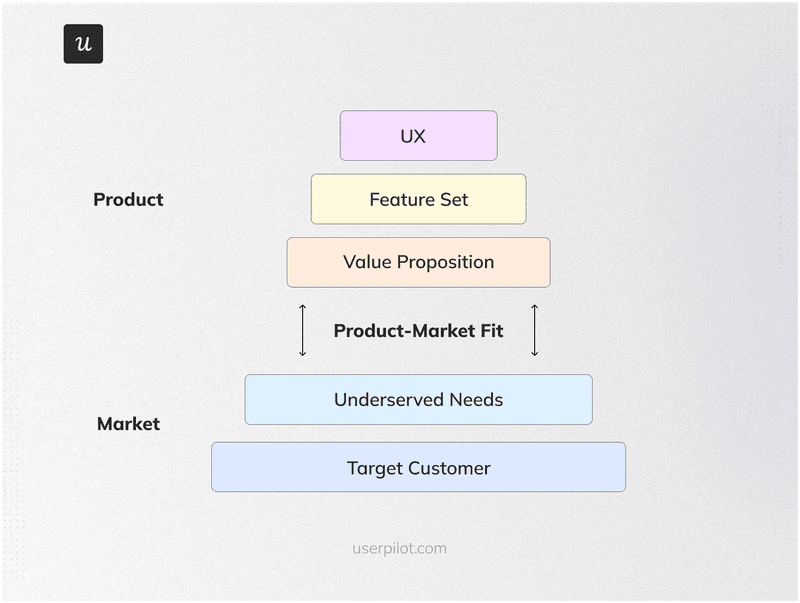
3. Collect and analyze customer data
Collecting and analyzing customer data is pivotal in fine-tuning your monetization strategy. Leveraging analytics tools like Userpilot allows you to track user behavior patterns, product usage, and other key metrics that provide insights into how your software is utilized.
Additionally, conducting surveys and collecting feedback directly from your users offers invaluable information about their experiences, preferences, and any pain points they may encounter.
This combination of quantitative data from analytics and qualitative insights from surveys equips you with a comprehensive understanding of your user base, enabling you to make informed decisions that enhance customer satisfaction and drive revenue growth.
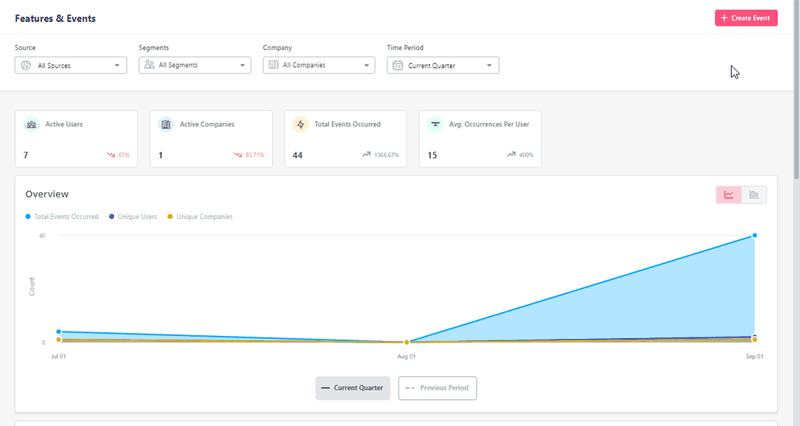
4. Monitor performance
Monitoring performance is critical to understanding the effectiveness of your monetization strategies. This involves tracking product and revenue growth to gauge how well your approaches resonate with users and contribute to your financial goals.
It’s important to be proactive in updating your product and monetization strategies based on performance data, ensuring they remain aligned with market demands and user expectations.
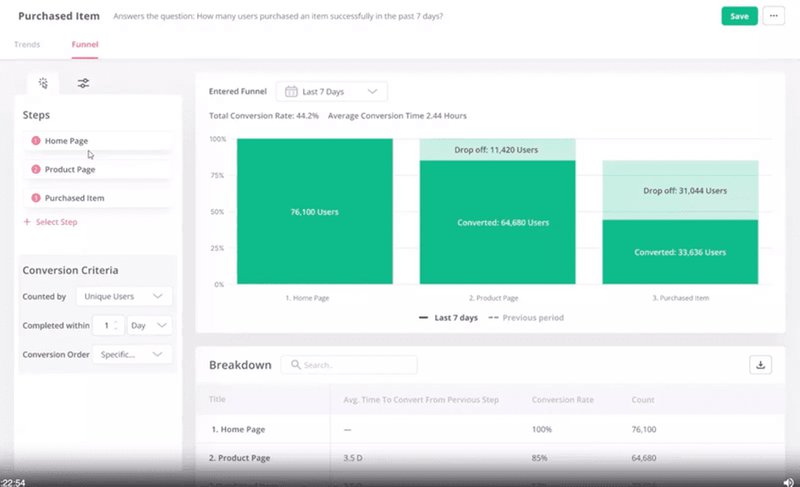
5. Protect your software
Protecting your software is essential for software publishers to ensure its successful monetization. Implementing robust security measures helps software publishers safeguard against unauthorized use, data leaks, and piracy, preserving the integrity and value of their products.
This protects the revenue streams of software publishers and builds trust with users, reassuring them that their data and privacy are secure.
Conclusion
You might want to use just one software monetization strategy or many. However, it is important to gather the right data from your product to inform your decision and monitor whether you’ve made the right choice.
A product analytic tool can help you collect user feedback and analyze your product usage much easier. Userpilot is the perfect tool to get you started with software monetization. Get a Userpilot demo and see how you can generate revenue from your product.







